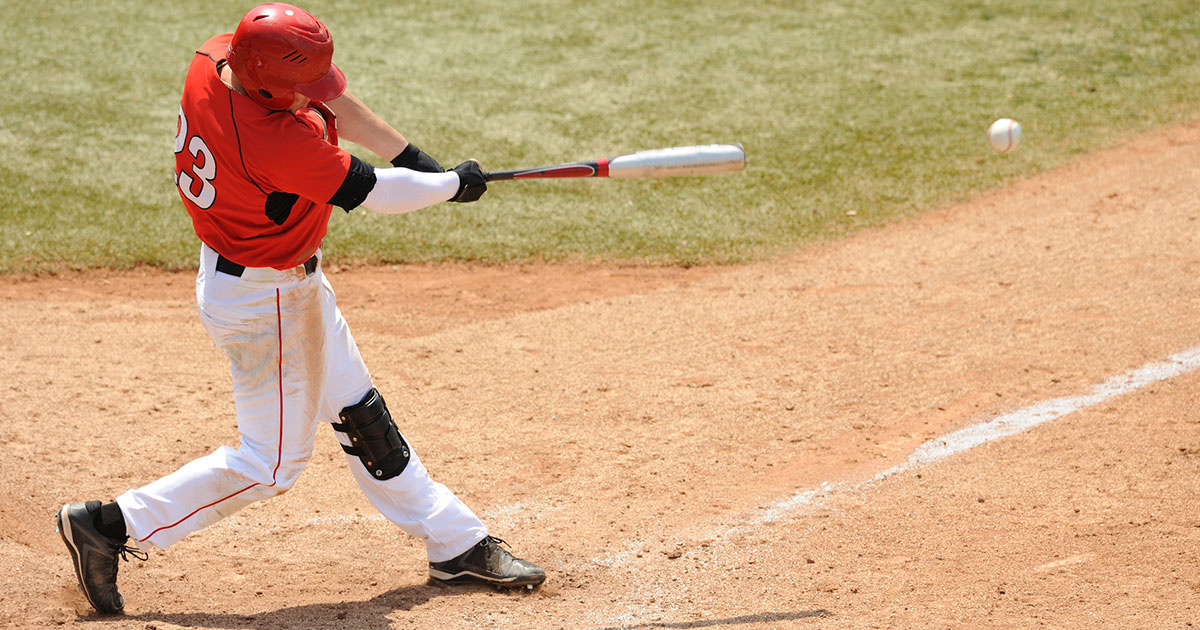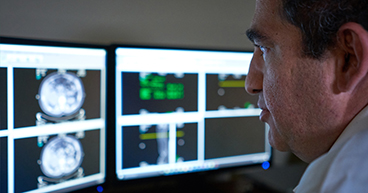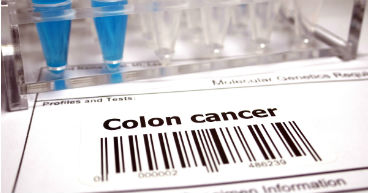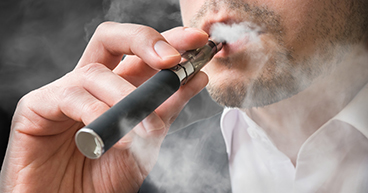
Brian Piccolo’s career as a National Football League (NFL) running back was unspectacular by many standards. Piccolo’s legacy, however, was not built through the modest statistics he compiled, but rather how he overachieved on the field, helped break down racial barriers and fought courageously with cancer, which was immortalized in the tear-jerking TV movie Brian’s Song. “I love Brian Piccolo, and I'd like all of you to love him,” his friend and roommate Gale Sayers said in a May 1970 speech. “When you hit your knees to pray tonight, please ask God to love him, too."
Piccolo died a month later at the age of 26 of embryonic cell carcinoma, a rare and aggressive cancer that often starts in the testicles. His cancer had spread to his lungs and beyond. “All of us cried watching Brian’s Song,” says Anthony Perre, MD, New Patient Intake Physician at Cancer Treatment Centers of America® (CTCA), Atlanta. “When you look at what treatments were available for him in the 70s … we’ve come a long way.”
Indeed, much has changed in the 50 years since Piccolo’s diagnosis. More advanced and more targeted treatments have increased survival rates for many cancer patients. And while Piccolo inspired many in death, young athletes diagnosed with cancer today are inspiring by battling back and not only surviving, but thriving in their sport.
“The advancements have been fantastic,” Dr. Perre says. “The treatments are getting more effective, and we are focusing more on the potential late effects of treatment, so a person in his or her 20s or 30s can continue to experience good wellness later in life.”
Play ball!
Several Major League Baseball (MLB) have taken the the field in recent seasons as cancer survivors.
Jon Lester: In his rookie season with the Boston Red Sox, at age 22, Lester was diagnosed with anaplastic large cell lymphoma, a form of non-Hodgkin lymphoma. In 2021, he entered his 16th season in baseball as a member of the Washington Nationals. He’s a five-time all-star, a World Series champion and retired with 200 MLB wins.
Trey Mancini: In 2020, at the age of 28, Mancini was diagnosed with stage 3 colon cancer, a disease his father had battled years earlier. After treatment with surgery and chemotherapy, Mancini returned to the Baltimore Orioles in time for the 2021 season.
Anthony Rizzo: In 2007, at age 18 and in his first season in the minor leagues, Rizzo was diagnosed with Hodgkin lymphoma. This year, Rizzo enters his 11th MLB season. He’s a three-time all-star, four-time Golden Glove first baseman and was a key part of the Chicago Cubs’ 2016 World Series championship team.
Carolos Carrasco: In May 2019, the Cleveland Indians pitcher was diagnosed with chronic myeloid leukemia (CML). Less than a year later, he threw a 95-mph fastball in his first start since returning from treatment. Carrasco, 33, is now a member of the New York Mets.
Jameson Taillon: In 2017, Taillon was diagnosed with testicular cancer. Five weeks after surgery he was activated from the disabled list and pitch five scoreless innings for the Pittsburgh Pirates. In 2022, as a member of the New York Yankees, he's developed into one of baseball's best pitchers.
While not every professional athlete who has been diagnosed with cancer returns to the glory days on the field, inspirational stories abound. With advanced treatments, early detection, proper nutrition and other supportive care services, many athletes have been able return to compete at high levels.
Indeed, John Metchie III, a wide receiver for the Houston Texans football team says he expects to bounce back after being diagnosed with leukemia in July 2022. The rookie says he is taking the season off to "focus will be on my health and recovery. Thank you in advance for your support and well-wishes. I cannot wait to come back stronger than ever."
And while most cancer patients aren’t professional athletes, the stories of those who are may offer insights and inspiration.
Advantage, athlete
Many professional athletes have advantages in life and resources to tap into that may not be available to others. They may have access to team staff, such as trainers, team physicians and state-of-the-art equipment and technology. Many are wealthy and may have dietitians or personal trainers. And they are young and strong.
“They’re in their 20s and 30s,” Dr. Perre says. “They may be healthier than most. They’re athletes, and they may have the ability to better endure treatment and move forward and return to close to where they were before.”
Still, just because most of us are not professional athletes—and never will be—that doesn’t mean we can’t build a foundation of fitness that may help later on should health challenges, including cancer, develop later in life. And for those who have already been diagnosed with cancer, healthy lifestyle changes may help treatments produce better outcomes and help reduce the risk of a cancer recurrence or second cancer.
Also, cancer treatments have evolved considerably since Piccolo’s cancer battle more than 50 years ago. Immunotherapy and targeted therapy are designed to help doctors attack specific features in cancer cells with fewer side effects. And radiation therapy is more targeted, allowing doctors to focus more on the cancerous cells while avoiding healthy ones. These advances help reduce the long-term effects that may have otherwise made it more difficult to bounce back from treatment.
“Thirty years ago, you might get mantle radiation, which is radiation essentially from head to toe,” Dr. Perre says. “Now, many times, they are able to use a more targeted radiation that eliminates some of the collateral damage. What we want to do is reduce the long-term risks associated with cancer treatment. So, part of the emphasis today is to limit the amount of radiation you’re given or manage the number of treatment cycles you go through.”
Cancers in young adults
The most common risk factor for cancer is age. Less than 5 percent of all new cases are diagnosed in people under the age of 35. The average age of a patient diagnosed with cancer is 66, and the average age at death is 72.
A few cancers, however, are more common in younger people, and some of those are highly treatable and may produce more positive treatment outcomes. For instance:
Testicular cancer is among the most common cancer diagnosed in young male athletes. MLB players Mike Lowell and John Kruk were both diagnosed with testicular cancer during their playing days and had productive careers after their treatments. The average age of a patient diagnosed with testicular cancer is 33. The five-year survival is 95 percent.
Lymphomas, especially Hodgkin lymphoma, are also common among young athletes. National Hockey League stars Mario Lemieux and Phil Kessel both overcame Hodgkin lymphoma. The average age of a patient diagnosed with Hodgkin lymphoma is 40.
Not all cancers among those more common in young people produce positive outcomes. According to the American Cancer Society (ACS), other than lymphomas and testicular cancer, the most common cancers in young adults include:
- Breast cancer
- Melanoma
- Sarcomas (cancers of muscles and bones)
- Female genital cancers
- Thyroid cancer
In recent years, researchers have discovered an alarming increase in cancers among young people. A recent ACS study showed increases in kidney, thyroid, colorectal and uterine cancers in various young adult age groups, prompting calls for more research and better access to health care for young people.
Going for a run
Dr. Perre is no professional athlete, but he’s a big sports fan, and he’s a cancer survivor. Like many, he had been inspired by athletes who had returned to their sports after battling cancer. Then, one day, it was his turn.
“When I was diagnosed, my doctor called me on the phone and said, ‘You have Hodgkin lymphoma, and Mario Lemieux had Hodgkin lymphoma and look at him now,’” Dr. Perre says. “He’s one of the greatest hockey players of all time.”
Dr. Perre’s 2007 battle with lymphoma prompted him to make lifestyle changes that are also inspiring. After he was told his treatment had resulted in no evidence of disease, Perre was determined to build a new foundation for his life. He changed his diet, began to exercise and paid more attention to getting restful sleep and reducing stress.
“For me, it was about having control over some factors that I knew might increase the risk of my cancer recurring,” he says. “I knew that by changing my diet and starting to exercise, I’d be able to reduce my risk of recurrence.”
Over time, Dr. Perre went from regular walks to running. He’s since completed two marathons. “The most important thing is to get into a routine that you can stick with,” he says. “My wife and I started to exercise together. We started to walk part of it and run part of it. It’s something we can do to strengthen our bond; it helps manage stress.”
You may not have a nutritionist on staff, but you can eat healthier. Stick with lots of fruits and vegetables, whole grains and lean meats. Lay off sugary and salty snack foods and processed meats.
You may not be able to hire a personal trainer, but you can exercise regularly. Check with your doctor to determine the level of exercise appropriate for you and try to do a little something every day.
You may not play on a professional sports team, but you can hook up with family and friends to help motivate you and participate in activities you enjoy.
“I was also fortunate that I have a wife who is athletic,” Dr. Perre says. ”So, I had that person beside me who was able to motivate me and push me when I didn’t have the energy. Consider getting into a support group or doing group exercise. Being in a group or having that person next to you can help encourage you.”
Learn why cancer survivors are at high risk of severe COVID-19 symptoms.



